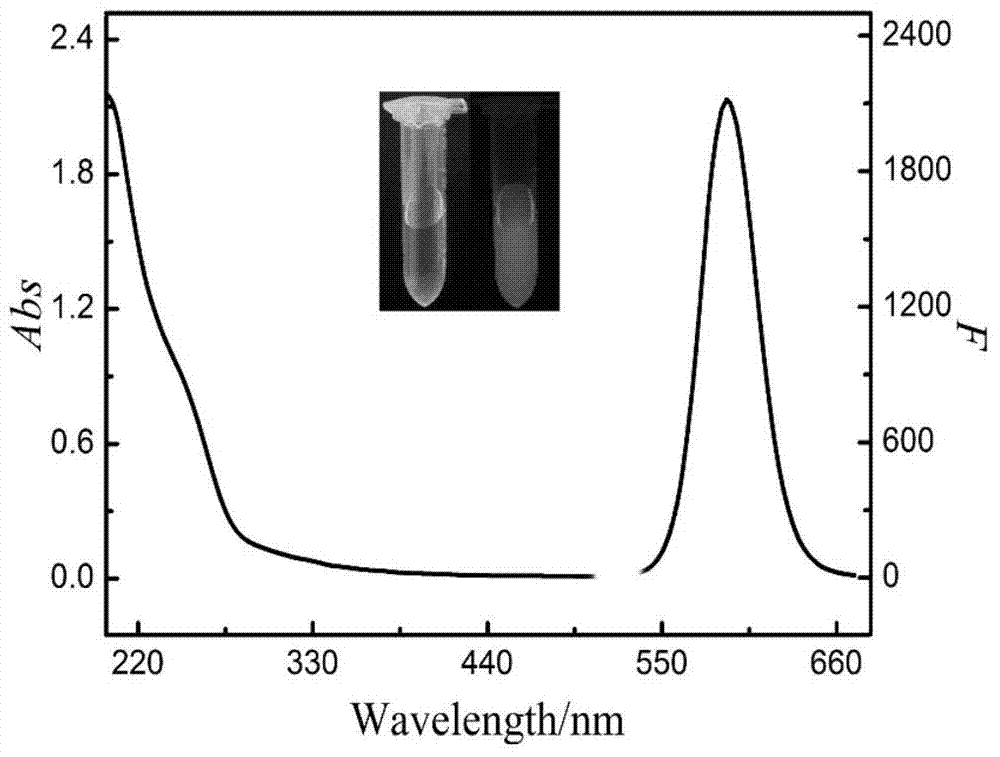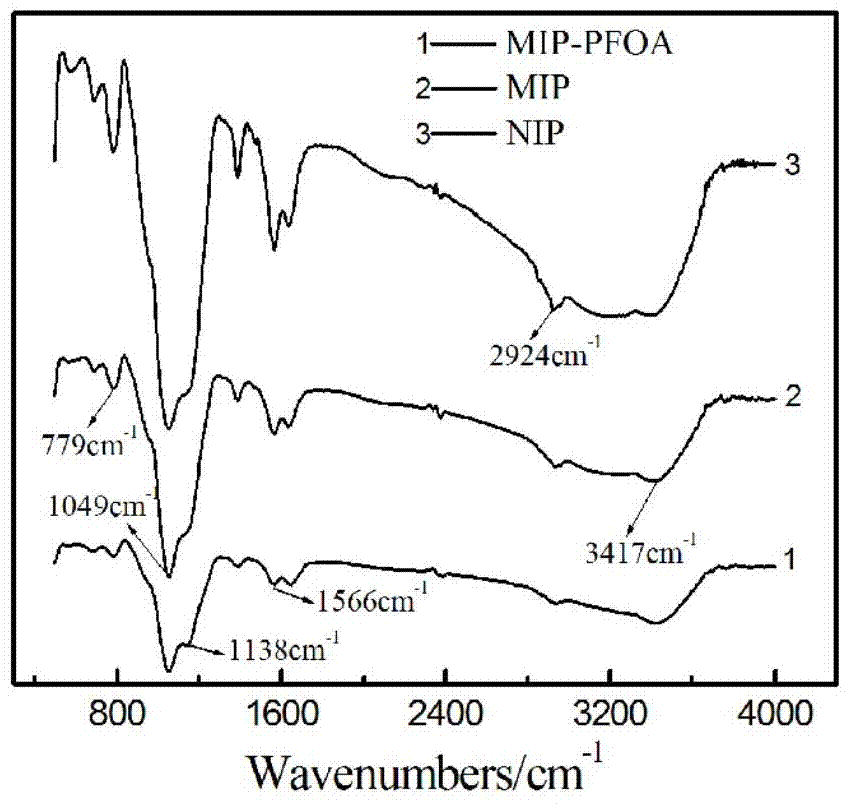Molecularly imprinted polymer based on core-shell quantum dot and application thereof
A core-shell quantum dot and molecular imprinting technology, which can be used in material excitation analysis, fluorescence/phosphorescence, etc., can solve the problems of time-consuming and complicated operation, and achieve the effects of rapid recombination, improved detection efficiency, and good optical stability.
- Summary
- Abstract
- Description
- Claims
- Application Information
AI Technical Summary
Problems solved by technology
Method used
Image
Examples
Embodiment 1
[0040] Example 1 Preparation of core-shell quantum dot molecularly imprinted polymer
[0041] (1) Preparation of CdTe / CdS quantum dots: under a nitrogen atmosphere, weigh 0.0191 g of tellurium powder and excess sodium borohydride and add it to 10 mL of deionized water, and obtain colorless NaHTe after 2 hours; according to Cd 2+ : TGA: HTe molar ratio is 1: 2: 0.25, 0.1370 grams of CdCl 2 2.5H 2 O was added to 150 mL of deionized water, and 80 μL of thioglycolic acid was added as a stabilizer under stirring, and the pH was adjusted to 11 with sodium hydroxide drop by drop, and transferred to a three-necked flask; NaHTe was also transferred to a three-necked flask, and nitrogen gas was passed for 30 minutes , add 4mL of 0.5mol / L dilute sulfuric acid dropwise, under magnetic stirring, NaHTe reacts with dilute sulfuric acid to generate H 2 Te, H 2 Te reacts with the solution in the absence of oxygen to form a CdTe precursor; reflux at 96 °C for 2 hours in the absence of oxygen...
Embodiment 2
[0043] Example 2 Preparation and Characterization of CdTe / CdS Quantum Dots and Imprinted Polymers
[0044] 1. Spectrum of CdTe / CdS quantum dots
[0045] The highly luminous QDs synthesized by the present invention were characterized by fluorescence spectroscopy as follows: figure 1 shown. The ultraviolet-visible absorption spectrum shows that there is a strong exciton absorption in the ultraviolet absorption region, and the fluorescence emission peak is located at 590nm. It emits strong red fluorescence under ultraviolet light. The particle size of quantum dots can be obtained according to the following equation: D=(9.8127×10 -7 )λ 3 -(1.7147×10 -3 )λ 2 +1.0064λ-194.84; D is the particle size of QDs, and λ(nm) is the wavelength of the first exciton absorption peak of the corresponding sample. Accordingly, the particle size of CdTe / CdS QDs can be calculated to be 3.58nm.
[0046] 2. Characterization of MIP and NIP coated CdTe / CdS QDs
[0047] MIP-coated CdTe / CdS QDs we...
Embodiment 3
[0058] Embodiment 3 adopts polymer of the present invention to detect PFOA
[0059] Take tap water and Jialing River water respectively, after heating and boiling, filter with 0.22μm filter membrane three times. The content of PFOA in the sample was measured after the quantum dot-molecularly imprinted polymer was prepared according to the method of the embodiment of the present application, and the results are shown in Table 1. The experimental results showed that PFOS was not detected in the tap water samples and the Jialing River water samples. The recovery rate was between 91.0% and 107.0%, and the RSD was less than or equal to 5.61%.
[0060] The recovery rate determination (n=5) of PFOA in the table 1 sample
[0061]
[0062] a tap water; b Jialing River water (taken from the Beibei section of the Three Gorges reservoir area); MIP concentration: 0.03g / L; pH 3.8.
PUM
 Login to View More
Login to View More Abstract
Description
Claims
Application Information
 Login to View More
Login to View More - R&D
- Intellectual Property
- Life Sciences
- Materials
- Tech Scout
- Unparalleled Data Quality
- Higher Quality Content
- 60% Fewer Hallucinations
Browse by: Latest US Patents, China's latest patents, Technical Efficacy Thesaurus, Application Domain, Technology Topic, Popular Technical Reports.
© 2025 PatSnap. All rights reserved.Legal|Privacy policy|Modern Slavery Act Transparency Statement|Sitemap|About US| Contact US: help@patsnap.com



